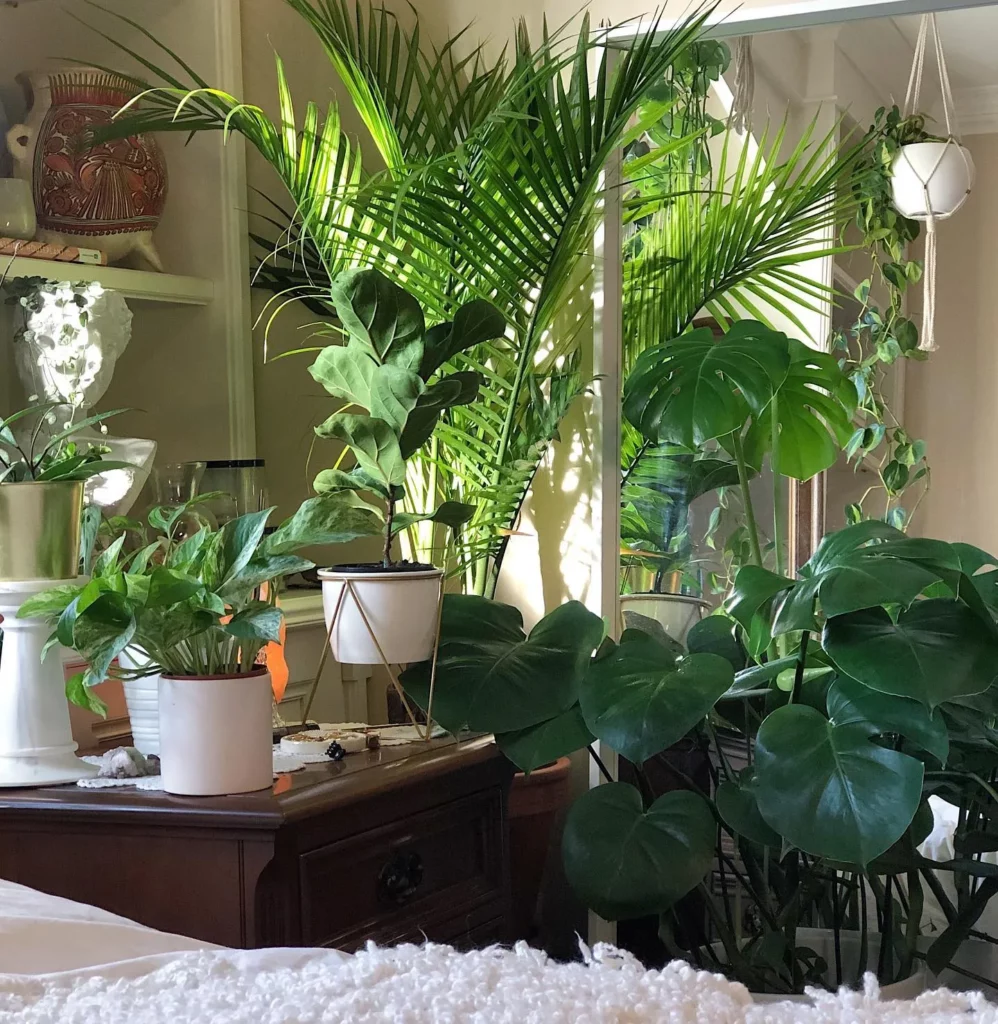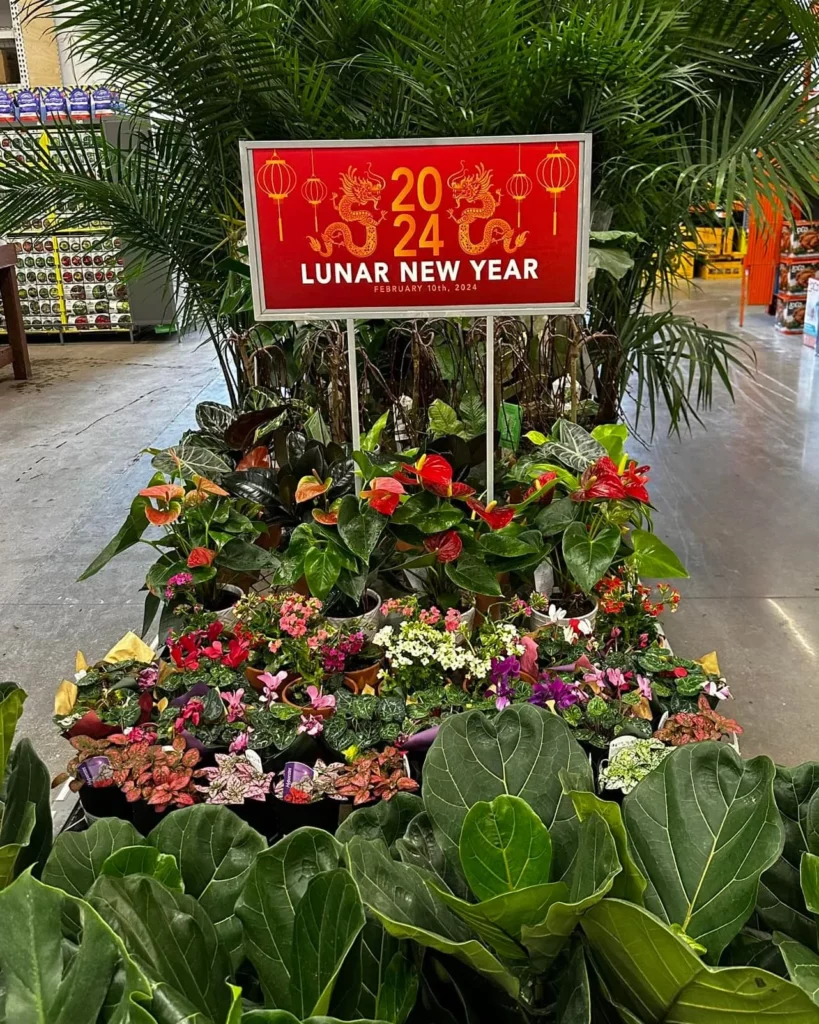The Majesty Palm, also known as Ravenea rivularis, is a stunning tropical houseplant that can add a touch of elegance and a sense of the tropics to any indoor space. The plant boasts long, graceful fronds that fan out from a central trunk, creating a lush and tropical appearance. The foliage is deep green and the plant can reach impressive heights of 10 to 20 feet, making it a stunning focal point no matter where you choose to display it.
No products found.
Light Requirements for Majesty Palm



If you want your Majesty Palm to grow healthy and beautiful, it is essential that you provide it with the right amount of light. Majesty Palms thrive best in bright, indirect sunlight, so make sure to place your plant in a location with filtered light or partial shade. Direct sunlight can scorch the leaves, so it’s best to avoid placing them in such spots.
No products found.
Pay close attention to your palm, especially in the summer when the sun is stronger. If you notice the fronds turning yellow or brown, it may be a sign of too much sunlight. You should move the palm to a shadier spot until the leaves get their green color back.
Watering a Majesty Palm

Proper watering is essential for keeping your Majesty Palm healthy and thriving. Overwatering can lead to waterlogged roots, while underwatering can cause leaf browning and wilting.
No products found.
Aim to keep the soil consistently moist but not waterlogged. Allow the top inch of soil to dry out before watering the palm thoroughly. Avoid letting the soil dry out completely between waterings, as it can cause stress to the plant.
Using filtered or distilled water can help prevent the tips of the fronds from turning brown, as the chemicals in tap water can build up in the soil and harm the plant over time.
Fertilizing a Majesty Palm



Majesty Palms require regular fertilizing to support their healthy growth and vibrant appearance. It is highly recommended to use a balanced, water-soluble fertilizer specially formulated for palm trees. When using fertilizer during the growing season, it should be applied every two to four weeks following the instructions provided by the manufacturer.
No products found.
Over-fertilizing may cause burn and irreparable damage to your Majesty Palms. Therefore, avoid pouring excess amounts of fertilizer or spreading it too close to the trunk. Lastly, it is essential to keep the soil moist after fertilization to make the palm tree easier to absorb the nutrients.
Potting a Majesty Palm

Proper potting is essential for the health of your Majesty Palm. Begin by choosing a pot with drainage holes to prevent waterlogged roots, which can lead to root rot. Use a high-quality potting mix formulated specifically for palms or tropical plants, which have the right balance of nutrients needed for your Majesty Palm.
When repotting, choose a pot that is only slightly larger than the current one to avoid excess soil moisture, which can also lead to root rot. Repotting is typically done every 2-3 years or when the palm has outgrown its current container.
No products found.
When potting, ensure that you are planting your palm at the same depth as it was in the previous container. Firmly pack the soil around the root ball and water your palm thoroughly. After potting, it is important to keep your Majesty Palm in a bright, filtered light location to help it adjust to its new home.
Propagation of Majesty Palm



Majesty Palms are a beautiful addition to any indoor space and can be easily propagated through division or planting seeds. For a higher success rate, division is the more preferred method. To divide the palm, carefully remove it from the pot and separate the clumps of multiple stems, ensuring each section has roots attached.
Plant the divided sections in separate pots with fresh potting mix, water thoroughly, and provide them with the same care as mature palms. It is important to note that new growth may take a few months to emerge. However, with proper care and patience, the propagated Majesty Palm will soon grow into a lush and vibrant plant.
No products found.
Majesty Palm propagation is a great way to expand your plant collection and share the love of gardening with others. With a little care and attention, you can easily propagate your Majesty Palm and enjoy the beauty of this tropical plant for years to come.
Growth and Development of Majesty Palm

Majesty Palms are a slow-growing plant, especially when grown indoors, so be patient with its growth. It may take several years for a palm to reach its full height potential. However, as the palm grows, new fronds will emerge from the center of the plant, adding more lush greenery to your space. On the other hand, older fronds will gradually turn yellow and brown. Regularly removing any dead or dying fronds will not only keep your plant looking fresh, but it will also promote new growth.
Pests and Diseases Affecting Majesty Palm
Majesty Palms can be susceptible to various pests and diseases that can impact their health. Spider mites, mealybugs, and scale insects are common pests that can infest Majesty Palms. Regularly inspect your plant for signs of infestation, such as webbing or small, white cotton-like spots, and treat them using organic insecticidal soap or neem oil.
No products found.
Overwatering or poor ventilation can lead to root rot or fungal infections, which can be detrimental to the health of your Majesty Palm. It’s important to water your palm only when the top inch of soil is dry and ensure there is proper airflow around the plant. Additionally, avoid placing your palm near cold drafts or in excessively humid areas, as this can increase the risk of fungal growth.
Caring for Your Majesty Palm: Tips and Final Thoughts
Caring for a Majesty Palm can be a rewarding experience, but it does require some effort. Here are some essential tips to help your palm thrive:
- Ensure your palm receives bright, indirect sunlight, and avoid placing it in direct sunlight.
- Water your palm consistently, keeping the soil moist but not waterlogged, and avoid letting the soil dry out completely.
- Fertilize your palm regularly with a balanced, water-soluble palm fertilizer.
- Pot your palm in a well-draining soil mix formulated for palms or tropical plants and choose a pot with drainage holes.
- Regularly inspect your palm for signs of pests and diseases and treat them accordingly.
- Remove any dead or dying fronds to maintain the palm’s appearance.
FAQ
How tall can a Majesty Palm grow?
Majesty Palms can reach heights of 10 to 20 feet.
What does a Majesty Palm look like?
Majesty Palms have long, graceful fronds that fan out from a central trunk, creating a lush and tropical appearance. The foliage is deep green.
What kind of light does a Majesty Palm need?
Majesty Palms thrive in bright, indirect sunlight. They prefer a location with filtered light or partial shade.
How often should I water a Majesty Palm?
Aim to water the palm thoroughly once the top inch of the soil feels dry. Keep the soil consistently moist but not waterlogged.
What should I use to fertilize a Majesty Palm?
Use a balanced, water-soluble fertilizer formulated specifically for palms. Apply it every two to four weeks during the growing season.
How should I pot a Majesty Palm?
Choose a pot with drainage holes and use a high-quality potting mix formulated for palms or tropical plants. Repot every 2-3 years or when the palm has outgrown its current container.
How can I propagate a Majesty Palm?
Majesty Palms can be propagated through division. Carefully remove the palm from the pot, separate the clumps of multiple stems, and plant them in separate pots with fresh potting mix.
How fast does a Majesty Palm grow?
Majesty Palms have a relatively slow growth rate, especially indoors. It may take several years for them to reach their full height potential.
What pests and diseases can affect a Majesty Palm?
Majesty Palms can be affected by pests such as spider mites, mealybugs, and scale insects. They can also suffer from diseases like root rot or fungal infections caused by overwatering or poor ventilation.
Any tips for caring for a Majesty Palm?
Provide the palm with the right amount of light, water it consistently, fertilize regularly, and ensure it’s potted in well-draining soil. Regularly inspect for pests and diseases and remove dead fronds to maintain its appearance.




